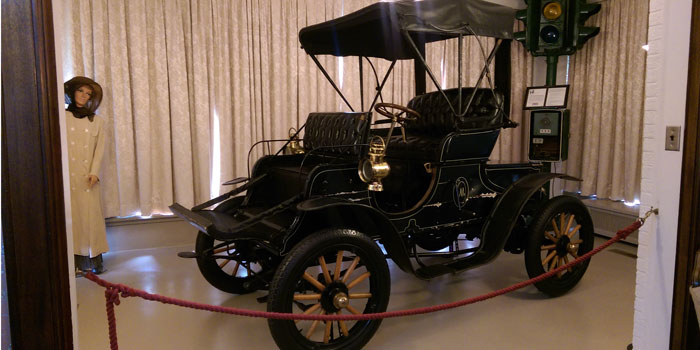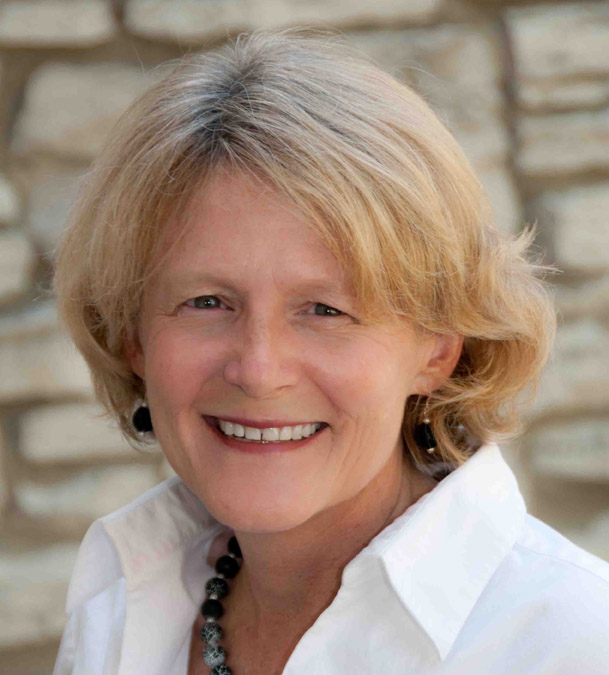Indiana At 200 — Elwood Haynes

The Haynes-Apperson Co. priced this 1905 Model L at $1,350 and marketed it as, “a car that is always reliable.” The car is displayed on the first floor of the Elwood Haynes Museum.

Andrea Neal
By ANDREA NEAL
The date was July 4, 1894. The location was Pumpkinvine Pike 3 miles east of Kokomo. Elwood Haynes had hauled his newfangled carriage — a horseless one no less — to the edge of the city for a test drive. He unhitched the horses that towed it there, mounted the driver’s seat and with a push-start drove into the future.
“The little buggy ran eastward, carrying three passengers about one and one half miles,” Haynes later recounted. “It was then stopped and turned about when it ran all the way into Kokomo without making a single stop. Its speed was about seven miles per hour.”
As a result of that day’s accomplishments, Haynes claimed to have invented the first American automobile. One or two others beat him to it, according to the Smithsonian Institution, but this much is certain: Haynes was one of the first U.S. inventors to build and sell gas-powered cars to the public.
 The story is recounted at Kokomo’s Elwood Haynes Museum on South Webster Street, which occupies the colonial-style home Haynes shared with his wife Bertha until his death in 1925.
The story is recounted at Kokomo’s Elwood Haynes Museum on South Webster Street, which occupies the colonial-style home Haynes shared with his wife Bertha until his death in 1925.
There’s much more to his story than cars, notes museum docent Pete Kelley. “His work in metallurgy changed the industrial world.” Among his many discoveries, Haynes patented an alloy called stellite, a hard metal still used today in machine tools, medical equipment, cans and cutlery.
Although Haynes is Kokomo’s most famous celebrity, he was not a native son. Born in Portland, Indiana, in 1857, Haynes attended public school in Jay County before enrolling at Worcester Polytechnic in Massachusetts, a place that nurtured his scientific interests, and later at Johns Hopkins University in Baltimore.
Armed with curiosity and new understanding of chemistry, Haynes returned to Portland where he worked in education and the booming natural gas industry. He started thinking about ways to use gas to power a horseless carriage.
He moved to Kokomo in 1892 to manage a gas plant and pursued his idea for a buggy. His first step was to purchase a one-horsepower Stintz gasoline engine he eyed at the Chicago World’s Fair. His second was to draw up a blueprint. His third was to persuade two brothers, Elmer and Edgar Apperson, to take his idea and build him a car in their machine shop at 40 cents an hour.
Following the successful test drive of “Pioneer” on Pumpkinvine Pike, Haynes and the Appersons formed the Haynes-Apperson Automobile Company, which sold nearly a dozen cars its first year. In 1902, the partnership dissolved, each continuing to make vehicles.
At its height in 1923, the Haynes Automobile Company produced 40 cars a day, according to museum documents. Haynes died in 1925. With the economy facing an uncertain future, his wife dissolved the business soon after.
Haynes donated the Pioneer to the Smithsonian in Washington, D.C., in 1910, still believing that his car was the first. Smithsonian curators state in their exhibit documents that, “there were other, earlier automobiles, including the Duryea, which is in the museum’s collection,” a reference to an 1893 car built by Charles and Frank Duryea of Springfield, Mass.
Haynes’s significance in automobile history is undisputed. In July, 2015, he was inducted into the Automotive Hall of Fame in Detroit, Mich., cited for his successful test drive of Pioneer, “two years before Henry Ford’s Quadricycle and less than a year after Charles Duryea’s Motorized Wagon.”
Note to readers: This is one in a series of essays that lead to the celebration of the Indiana Bicentennial in December. The essays will focus on the top 100 events, ideas and historical figures of Indiana, beginning with the impact of the Ice Age and ending with the legacy of the Bicentennial itself. Neal is a teacher at St. Richard’s Episcopal School in Indianapolis and adjunct scholar with the Indiana Policy Review Foundation. Contact her at [email protected].
Directions: The Elwood Haynes Museum is at 1915 S. Webster St., Kokomo.
